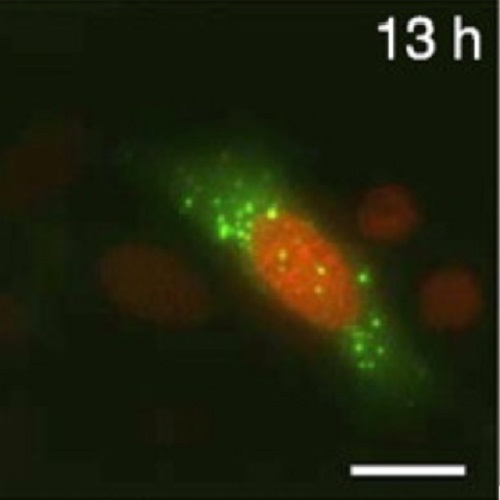Prototype foamy virus gag nuclear localization: a novel pathway among retroviruses.
Gag nuclear localization has long been recognized as a hallmark of foamy virus (FV) infection. Two required motifs, a chromatin-binding site (CBS) and a nuclear localization signal (NLS), both located in glycine-arginine-rich box II (GRII), have been described. However, the underlying mechanisms of Gag nuclear translocation are largely unknown. We analyzed prototype FV (PFV) Gag nuclear localization using a novel live-cell fluorescence microscopy assay. Furthermore, we characterized the nuclear localization route of Gag mutants tagged with the simian vacuolating virus 40-NLS (SV40-NLS) and also dissected the respective contributions of the CBS and the NLS. We found that PFV Gag does not translocate to the nucleus of interphase cells by NLS-mediated nuclear import and does not possess a functional NLS. PFV Gag nuclear localization occurred only by tethering to chromatin during mitosis. This mechanism was found for endogenously expressed Gag as well as for Gag delivered by infecting viral particles. Thereby, the CBS was absolutely essential, while the NLS was dispensable. Gag CBS-dependent nuclear localization was neither essential for infectivity nor necessary for Pol encapsidation. Interestingly, Gag localization was independent of the presence of Pol, Env, and viral RNA. The addition of a heterologous SV40-NLS resulted in the nuclear import of PFV Gag in interphase cells, rescued the nuclear localization deficiency but not the infectivity defect of a PFV Gag ?GRII mutant, and did not enhance FV's ability to infect G(1)/S-phase-arrested cells. Thus, PFV Gag nuclear localization follows a novel pathway among orthoretroviral Gag proteins.

- J. Virol. 2011 Sep 29;85(18):9276-85
- 2011
- Medical Biology
- 21715475
- PubMed
Enabled by:
